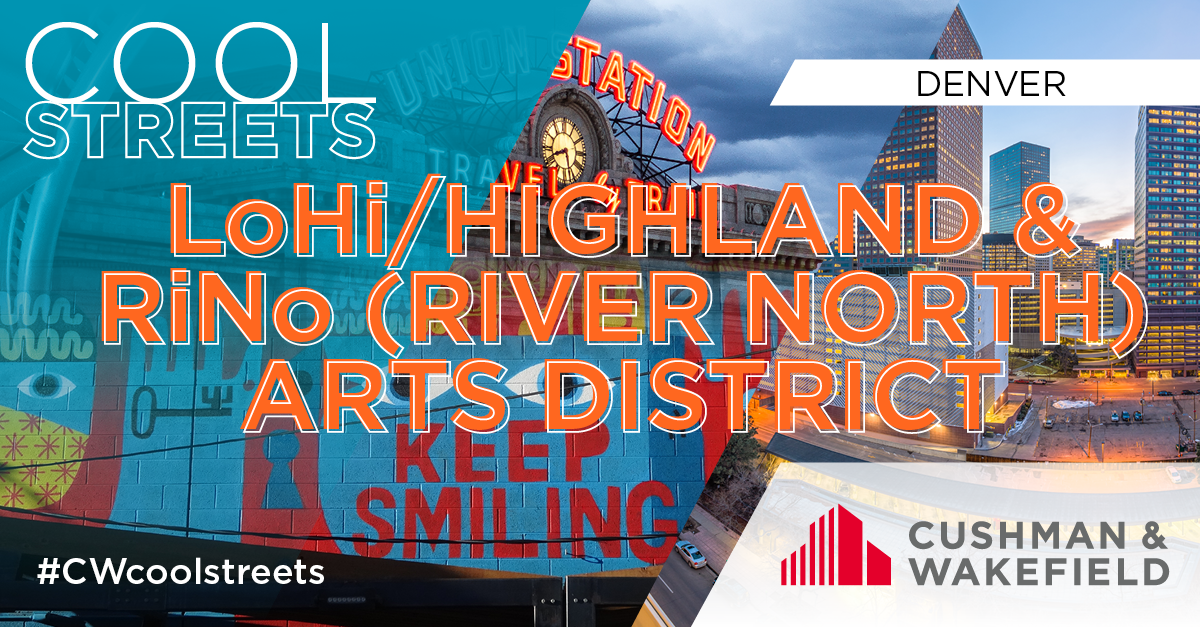Cushman & Wakefield’s latest COOL Streets 2019 Report explores how a new wave of urban, experiential and independent retail concepts catering to changing consumer demands, has led to the rise of 100 “Cool Streets.” The report includes two of Denver’s hottest neighborhoods: Lower Highlands (LoHi) and RiNo and details retail trends, rent range, demographics and what makes Denver’s CBD one big “cool street.”
Denver Highlights
- While Cool Streets remain strong in large, primary markets and so-called “24-hour” cities like Boston, Chicago, Los Angeles, New York City, San Francisco, Seattle and Toronto, affordable housing and employment are driving the 18-Hour Cool Street in cities like Boise, Charlotte, Denver, Nashville, Portland, Salt Lake City and Tampa.
- Over the past decade multiple Denver area neighborhoods have been transformed and the city’s central business district (CBD) has essentially reinvented itself to become a “Cool Street.”
- Perhaps the most well-known transformative neighborhoods would be the River North Arts District (RiNo), Lower Downtown (LoDo) and Lower Highlands (LoHi), but the area’s traditional upscale retail district, Cherry Creek is also transitioning.
- Creative class employment in the Mile-High City didn’t rank at all in 2005, but by 2017 the share of workers in Denver that would be classified as creatives accounted for 42.3% of the entire workforce — enough to rank it ninth in the nation.
- In the late 1990s, the local economy was driven by the energy and agricultural sectors, in addition to government and defense. Since then, Denver has increasingly become a tech driven market with the recent boom driven largely by in-migration from more expensive West Coast hubs like the San Francisco Bay Area and Seattle.
- 29% of Denver’s population are millennials and the median household income is $60,437
“It’s important to remember that Cool Streets are about more than just retail,” says Garrick Brown, vice president of Retail Intelligence, Americas at Cushman & Wakefield. “Their rise is at the nexus of multiple trends that impact not only commercial real estate but also society as a whole: the new urbanism, the impact of opportunity zones, the growing gulf between skilled and unskilled labor, the benefits and risks of a global tech-driven economy, and the rise of an experience-based economy.
Download the full report here











